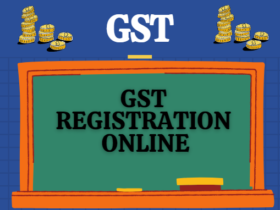How to Create an Advertising Plan? An advertising plan helps a business or company to promote a product or service, reach a new customer base, increase market awareness, and increase sales.
Advertising is a form of marketing that uses a sponsored, non-sponsored message to reach customers. It is paid for by the company and sells an idea, product, or service.
Therefore, Every business needs an advertising plan. Think of it as your guide to promoting your business.
In addition, Your plan will tell you who your goals are, how to reach them. And most importantly, what you have failed to do.
READ ALSO: What Is Internet Marketing and How it Works?
However, It helps to promote business, raise market awareness, reach a new customer base, thereby increasing sales to all.
An advertising plan is a blueprint for how you will use advertising to promote your business and reach new customers. Having a plan ensures that your company’s advertising money is well spent and your advertisement reaches the right audience.
It also establishes benchmarks that you can use to assess whether your strategy is effective in reaching customers within the constraints of your marketing budget.
How to Create an Advertising Plan here are some steps with that you can create your Plan. How to Become a Millionaire by 30.
How to Create an Advertising Plan
1. Define Your Goal
First of all, you have to start with your goal. To find out what your goal is, you have to ask yourself which is an important question.
To creating your advertising strategy, you need to have a comprehensive business plan. This will allow you to create an advertising plan that reaches the right customers, uses effective marketing messages, and stays within your budget.
Your goal may be to encourage your customers to social media of your business or, for example, to attract new customers. Whatever your goal is, it has to be specific and well defined to achieve.
2. Plan your Budget
Your advertising plan must fit a certain budget. When developing it, think about the operating costs as well as the finances of the company you are willing to invest in to achieve the specific goal already set.
Have a clear plan for where you spend your advertising dollars and how much you can spend. This helps you stay within your marketing budget and ensures that you bring in more revenue than you spend on advertising.
Learn how to create an advertising plan to fit your budget. How much are you willing to spend to promote your business? If you already have some ideas, how much will it cost to implement these ideas?
3. Research and Define Your Audience
You have to do your research before you can define your audience. The success of an advertising plan lies in the ability to target the right audience, so the better you define your targeted audience, the more successful your marketing efforts are.
When you focus on increasing sales, it helps to find out who can buy your product or service.
To research and subsequently define your audience you need to think about the people who are most likely to buy your product/service, as well as their demographics.
When defining your customers try to be as detailed as possible.
4. Determine the Advertising Outlets
To be successful in what you do, you have to know how you are going to do it. In this sense, for an efficient marketing plan, you are bound to determine the marketing outlet.
To do this, you have to focus on the people you are targeting and where you can find them.
Every business has its own appropriate form of advertising. This can be social media marketing, email advertising, or traditional marketing.
Whatever it is, looking at the target audience, find the right outlet for your company and take advantage of it.
5. Complete a SWOT Analysis
SWOT stands for your company’s strengths, weaknesses, opportunities, and threats.
What is the core competency of your business? What do you do well that gives you an advantage? If you sell clothes, and winter is around the corner, this is your opportunity to launch a new winter gear.
Likewise, what are your competitors doing that could be a hindrance to your business?
When you are promoting your business, you want to focus on something that sets you apart from your competition.
Look at your competitors and use your SWOT analysis to find mismatches – do you offer lower prices? Better product? You will want to take advantage of those differentiators in your advertising plan.
6. Launch Your Advertising
If an advertising plan through no one will help promote your business. Now is the time to take all your ideas and put them into practice.
In addition, to create social media campaigns, create television spots, and broadcast radio commercials.
What type of social media campaign can your business run? Can you sponsor a local event or run some kind of competition? Make a list of low-cost tasks that can help your business naturally support your advertising plan.
Therefore, You need to answer three questions: what, when, and where. What kind of ads are you going to run? When are you going to run them? And where are they going to appear?
Keep everything consistent, be it medium or channel. Consistency is important when running multidisciplinary campaigns. Be consistent in both message and brand.
7. Track, Measure and Analyze the Results
Once you start a marketing campaign based on your advertising plan, there is time to track, measure, and analyze the results later.
This is a possibility for many advertising campaigns for your business – so pay full attention to the results.
However, The tracking and measurement of results are important because they both give such amazing insights into what worked and what didn’t.
For your next marketing plan, you will know exactly what you should implement and what is worth leaving behind.
Although you will repeat this process, always keep the results of the previous one in mind when making new advertising plans in the future.
Therefore, This is the last stage of every marketing plan.
READ ALSO: Online Businesses You Can Start With No Money
Advertising Mediums
There are many options for advertising your products or services. The best options will vary from business to business, depending on your customers, budget, region, industry, and business goals.
Print advertising is on paper, including advertisements for flying, direct mail, pamphlets, catalogs, newspapers, and magazines.
It is often more effective to reach an older audience or someone who is highly stable and unlikely to move. It can also be useful to stand out from competitors who primarily use online advertising.
TV and Radio
Television and radio advertising has a wide reach and can be useful for appearing to multiple customers simultaneously.
TV advertising is expensive and includes both the cost of an ad slot and the cost of producing an ad. Radio advertisements are often more cost-effective.
For consumers who are less likely to watch traditional media, streaming video platforms and podcasts may be a good replacement for TV and radio. These often reach more targeted areas of customers.
Emails reach potential or current customers directly. The average open rate for email marketing is around 17%, although this can vary between industries and companies, depending on how busy your email customers are.
Smaller companies often have higher open rates than larger companies. Larger companies often have the budget to purchase mailing lists from advertising marketing firms.
Digital
Advertising online includes a variety of websites, blogs, videos, search engines, and social media advertisements.
Digital ads traditionally embed a link that leads directly to your company’s website or product page, and they rely on a relationship that is already a website partnering with their readers or followers.
Therefore, Digital ads allow you to reach highly targeted areas of customers, often with offers tailored to their interests and needs.








